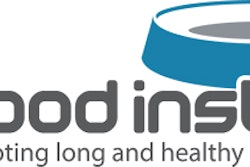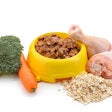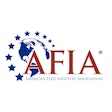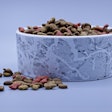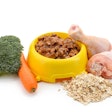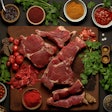The 2008 Annual Meeting of the Association of American Feed Control Officials (AAFCO) was held August 1-4 in Nashville, Tennessee, USA. During the general session, where the AAFCO membership as a whole votes on the recommendations made by the various committees over the past year, something unexpected happened.
Years of work gone?
The general session involves proposals that most often have been fully deliberated by their respective committees, so typically the membership understands and embraces them by the time they reach this stage.
Thus, it was surprising when the members voted to deny acceptance of the new Policy Statement #29 (PS 29). This policy would have allowed petfood companies to make specified informational statements about the physiological role of nutrients from ingredients in a petfood without necessitating a label guarantee for that nutrient. The Pet Food Committee (PFC) and Model Bill and Regulations Committee (MBRC) had deliberated the issue for many years before reaching a consensus.
As I understand it, the AAFCO board of directors considered the policy as proposed tantamount to condoning false and misleading labeling. They recommended rejection, and despite appeals from the Pet Food Institute and the American Feed Industry Association, the membership followed the board's direction. So, after all the years of hard work, PS 29 dies unless a committee picks up the gauntlet and tries again.
First step to carb claims
In other matters, the AAFCO membership did accept:
-
The amendment to the definition for Yucca schidigera extract to specify its limitations (for all animal feeds at no more than 125 ppm, but post-excretion manure odor control claims for poultry and livestock feeds only);
-
Sodium hexametaphosphate as a coating for dry petfoods to help reduce dental tartar accumulation; and
-
The proposed feed terms "sugars" and "fructans."
Based on feedback from the Laboratory Methods and Services Committee, the feed term "starch" was rejected. It was returned to the Ingredient Definitions Committee to address the concerns raised. These three definitions - for sugars, fructans and starch - are the first step to a means to allow carbohydrate-related label claims on animal feed (including petfood) labels.
Last, but certainly not least, the members accepted the proposal to include "pizzles" among other animal body parts (hides, bones, ears, snouts) expressly exempt under Policy Statement #27 from AAFCO labeling and registration requirements (provided specified conditions are met). But these parts are still food under federal law.
Updates on treats, milk
Within the PFC session, the Small Pet Food/Treat Manufacturers Working Group filed a report on its progress, which to date has consisted of collecting information for the group's consideration. Its ultimate charge is to make recommendations regarding means to educate small businesses such as local bakeries and treat manufacturers that are not aware of state registration and labeling requirements on how to comply, as well as possibly suggest means to make it easier for these entities to comply.
The Weight Related Terms and Calories Working Group did not file a report but did hold a brief meeting immediately after the PFC session to discuss its strategy for future deliberation. With luck, it will make recommendations regarding proposed amendments to Model Pet Food Regulations PF9 and PF10 in time for the AAFCO January 2009 (also known as the mid-year) meeting.
There was little to report from the AAFCO Profiles and Protocols Expert panel, except a lot of work going on in the background. The same comment was made in regard to progress in the Food and Drug Administration's (FDA) response to the FDA Amendments Act of 2007. In both cases, it is hoped there will be more tangible progress to report by January. The one point of progress within the PFC was with the Raw Milk Working Group, which completed its task to review and make recommendations on proposed language that would put labeling and other restrictions on raw milk products sold as petfood.
Measurement matters
The MBRC accepted the language for amendment of PF2(a)(3), and it now goes to the board. If accepted by the members next year, it would specify both avoirdupois (e.g., pounds/ounces for weight, or quarts/pints/fluid ounces for volume) and equivalent metric units in the net content statement. While these requirements have been in a proposed rule by FDA for over a decade, they have never been finalized at the federal level.
In the Ingredient Definitions Committee, glutamic acid was accepted for use in animal feeds and petfoods as a flavoring agent only, not to exceed 400 ppm. There was discussion but no action on a proposal to allow chicken feet in the definition for chicken meal. The wheat products investigator reported progress in developing a definition for wheat gluten and hydrolyzed wheat protein.
The January meeting will be in Tucson, Arizona, USA, while the next annual meeting is scheduled for Washington, DC, USA, in August 2009. AAFCO's first meeting was held in the US capital in 1909, so the association is planning special events to commemorate its 100th anniversary. Details for all will be posted soon at www.aafco.org .


